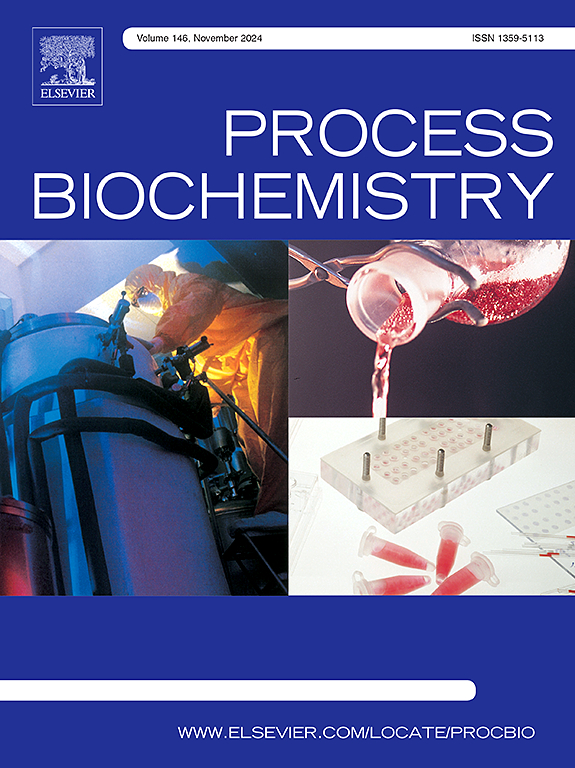Preparation, characterization and evaluation properties of a high-methoxyl pectin-iron (Ⅲ) from Actinidia arguta fruits
IF 4
3区 生物学
Q2 BIOCHEMISTRY & MOLECULAR BIOLOGY
引用次数: 0
Abstract
Iron deficiency anemia (IDA) was the most common nutritional disorder worldwide. As an effective and stable iron supplement, the physicochemical properties of iron complexes prepared using plant active ingredients have been extensively studied. In this study, a high methoxyl pectin AAP was extracted from the Actinidia arguta fruits. The synthesis process of AAP-iron (III) was optimized by single factor test and response surface methodology test. The physicochemical properties, structural characterization, and in vitro bioactivity were systematically investigated. Under the optimal synthesis conditions of pH 8.1, reaction time of 40 min, and temperature of 48 ℃, the iron content of AAP-iron (III) reached 26.62 ± 0.31 %. In addition, the -OH and -COOH groups in AAP coordinated with Fe3 + to form β-FeOOH groups. Compared with AAP, although the antioxidant capacity and α-glucosidase inhibitory activity of AAP-iron (III) were weakened, its α-amylase inhibitory activity was enhanced. In vitro digestion tests showed that AAP-iron (III) had a slow-release effect. Compared to FeSO4, AAP-iron (III) was more stable and not easily damaged by the simulated digestive solution. This study demonstrated that AAP-iron (III) was a promising new iron supplement.
软枣猕猴桃果实高甲氧基果胶铁的制备、表征及性能评价(Ⅲ)
缺铁性贫血(IDA)是世界上最常见的营养失调。作为一种有效的、稳定的补铁剂,利用植物活性成分制备的铁配合物的理化性质得到了广泛的研究。本研究从软枣猕猴桃果实中提取高甲氧基果胶AAP。通过单因素试验和响应面法对aap -铁(III)的合成工艺进行了优化。系统地研究了其理化性质、结构表征和体外生物活性。最佳合成条件为pH 8.1,反应时间40 min,温度48℃,AAP-iron (III)的铁含量达到26.62 ± 0.31 %。此外,AAP中的-OH和-COOH基团与Fe3 +协同形成β-FeOOH基团。与AAP相比,AAP-铁(III)的抗氧化能力和α-葡萄糖苷酶抑制活性减弱,但α-淀粉酶抑制活性增强。体外消化试验表明,aap -铁(III)具有缓释作用。与FeSO4相比,aap -铁(III)更稳定,不易被模拟消化液破坏。本研究表明,aap -铁(III)是一种很有前途的新型铁补充剂。
本文章由计算机程序翻译,如有差异,请以英文原文为准。
求助全文
约1分钟内获得全文
求助全文
来源期刊

Process Biochemistry
生物-工程:化工
CiteScore
8.30
自引率
4.50%
发文量
374
审稿时长
53 days
期刊介绍:
Process Biochemistry is an application-orientated research journal devoted to reporting advances with originality and novelty, in the science and technology of the processes involving bioactive molecules and living organisms. These processes concern the production of useful metabolites or materials, or the removal of toxic compounds using tools and methods of current biology and engineering. Its main areas of interest include novel bioprocesses and enabling technologies (such as nanobiotechnology, tissue engineering, directed evolution, metabolic engineering, systems biology, and synthetic biology) applicable in food (nutraceutical), healthcare (medical, pharmaceutical, cosmetic), energy (biofuels), environmental, and biorefinery industries and their underlying biological and engineering principles.
 求助内容:
求助内容: 应助结果提醒方式:
应助结果提醒方式:


